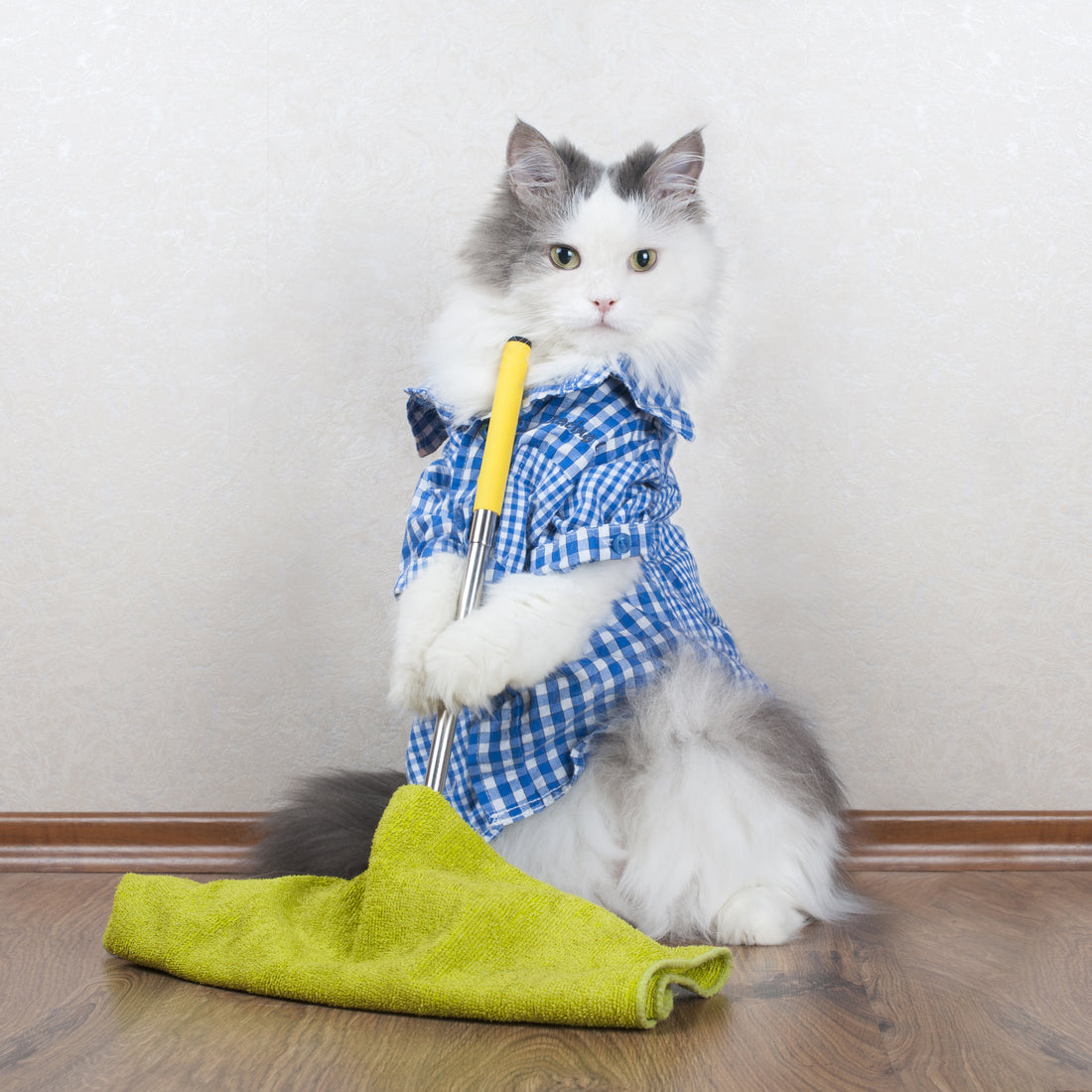Pet-Friendly Cleaning Tips: Safe, Effective, and Spotless Home Care for Pets

Share
Pet-Friendly Cleaning Tips: Creating a Safe and Spotless Home for Your Furry Friends
Welcome to Grandmother's Kitchen, where we cherish the wisdom passed down through generations. Just like our grandmothers knew the importance of a clean and welcoming home, we understand the unique challenges of maintaining a spotless living space while ensuring it remains safe for our furry friends. Here, we present the ultimate guide to pet-friendly cleaning, offering practical tips and insights to help you create a clean and pet-safe environment.
Understanding the Need for Pet-Friendly Cleaning
As pet owners, we strive to keep our homes clean without exposing our pets to harmful chemicals found in many traditional cleaning products. Common household cleaners often contain ingredients like bleach and ammonia, which can irritate pets' skin, eyes, and respiratory systems. Moreover, these substances can be toxic if ingested, posing serious health risks to our beloved companions.
Choosing Pet-Safe Cleaning Products
When selecting cleaning products, look for those labeled as pet-safe or non-toxic. These products typically use natural or plant-based ingredients that effectively clean without harmful side effects. Essential oils, such as lavender and eucalyptus, provide natural antibacterial properties while being gentle on your pets.
Grandmother's Tip: Always read labels carefully and opt for products free from harsh chemicals. Making your own cleaning solutions using vinegar, baking soda, and essential oils can be an excellent alternative.
Additional Tips:
- DIY All-Purpose Cleaner: Mix equal parts of water and white vinegar in a spray bottle. Add a few drops of essential oil for a pleasant scent. This solution works well for cleaning surfaces and floors.
- Baking Soda Deodorizer: Sprinkle baking soda on carpets and upholstery, let it sit for 15-20 minutes, then vacuum thoroughly to remove odors.
- Pet-Safe Floor Cleaner: Combine 1 gallon of warm water with 1 cup of white vinegar and a few drops of pet-safe essential oil. Use this mixture to mop floors safely.
Creating a Cleaning Routine
Establishing a regular cleaning routine can help manage pet messes and maintain a tidy home. Consistency is key to preventing dirt and pet hair from accumulating.
Grandmother's Tip: Incorporate daily quick-clean sessions and weekly deep-cleaning routines to keep your home in top shape.
Additional Tips:
- Daily Quick Clean: Spend 15 minutes each day tidying up high-traffic areas. Focus on vacuuming pet hair, wiping down surfaces, and cleaning pet bowls and litter boxes.
- Weekly Deep Clean: Allocate time once a week for more thorough cleaning tasks, such as washing pet bedding, vacuuming under furniture, and mopping floors.
- Monthly Maintenance: Deep clean pet toys, clothing, and other accessories monthly to prevent bacteria buildup.
Managing Pet Hair
Pet hair can be a persistent problem, but with the right tools and techniques, you can keep it under control. Regular grooming and effective cleaning methods can make a significant difference.
Grandmother's Tip: Use a vacuum with a pet hair attachment to remove hair from furniture and carpets efficiently.
Additional Tips:
- Grooming: Brush your pets regularly to reduce shedding. Use a vacuum or lint roller to remove loose hair from their coats.
- Furniture Covers: Protect furniture with washable covers to make cleaning easier. Choose materials that resist pet hair and are easy to clean.
- Vacuuming: Invest in a high-quality vacuum designed for pet hair. Robotic vacuums can help maintain cleanliness between deep cleaning sessions.
Tackling Pet Odors
Pet odors can linger in your home, but with a few simple steps, you can keep your space smelling fresh.
Grandmother's Tip: Clean pet bedding and blankets regularly to prevent odors from building up.
Additional Tips:
- Air Fresheners: Use pet-safe air fresheners or essential oil diffusers to neutralize odors. Avoid using products with strong fragrances that can irritate your pets' sensitive noses.
- Carpet Cleaning: Use a carpet cleaner specifically designed to remove pet odors. Consider steam cleaning carpets and upholstery to eliminate deep-seated smells.
- Litter Box Maintenance: Scoop litter boxes daily and change the litter frequently. Use baking soda or specialized odor control products to keep the area fresh.
Addressing Pet Accidents
Accidents happen, but prompt and effective cleaning can prevent stains and odors from setting in.
Grandmother's Tip: Blot spills immediately with paper towels to absorb as much liquid as possible before applying a cleaning solution.
Additional Tips:
- Enzyme Cleaners: Use enzyme-based cleaners to break down organic stains and odors. These products are highly effective for cleaning urine, vomit, and feces.
- Stain Removal: For stubborn stains, mix a solution of hydrogen peroxide and dish soap. Apply it to the stain, let it sit for a few minutes, then blot with a clean cloth.
- Preventive Measures: Place washable mats or rugs in areas where accidents are likely to occur. These can be easily cleaned and help protect your flooring.
Maintaining a Healthy Home Environment
In addition to cleaning, maintaining a healthy home environment for your pets involves creating a safe and comfortable living space.
Grandmother's Tip: Ensure your home is well-ventilated to reduce indoor air pollution and provide fresh air for your pets.
Additional Tips:
- Indoor Plants: Certain indoor plants can improve air quality by filtering toxins. However, ensure the plants you choose are non-toxic to pets.
- Safe Spaces: Create designated areas for your pets where they can feel safe and comfortable. Provide cozy bedding and toys to keep them entertained.


